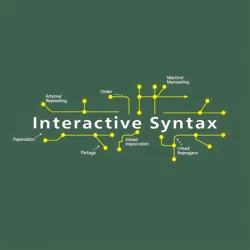Interactive Syntax
Interactive Syntax is a theoretical framework that explores the dynamic interaction between human language and machine languages, focusing on the development of user interfaces that facilitate seamless communication. This concept plays a crucial role in the field of cybernetic and transhumanist studies, where the integration of human and machine is increasingly prevalent.
Overview
Interactive Syntax aims to create a linguistic bridge between humans and machines, allowing for intuitive and natural exchanges in various digital environments. It encompasses the design of algorithms and protocols that interpret human inputs, such as speech or text, and translate them into machine-understandable commands. Conversely, it translates machine outputs into human-readable formats, ensuring a smooth interaction experience.
Historical Context
The need for Interactive Syntax emerged alongside the evolution of digital slang and the rise of artificial intelligence. As digital communication became more complex, traditional methods of interface design proved insufficient. Researchers and technologists sought new ways to enhance the interaction between users and machines, leading to the development of Interactive Syntax.

Image: A conceptual illustration of Interactive Syntax facilitating communication between humans and AI systems.
Key Features
Interactive Syntax is characterized by several key features:
-
Adaptive Linguistic Models: These models enable machines to learn and adapt to individual user preferences and cultural nuances, making interactions more personalized and efficient.
-
Multimodal Communication: Interactive Syntax supports various forms of input and output, including voice, text, gestures, and visual elements, providing users with flexible interaction options.
-
Contextual Understanding: By integrating contextual data, Interactive Syntax allows machines to interpret user intent more accurately, enhancing the relevance and accuracy of responses.
Applications
The applications of Interactive Syntax are vast and varied, spanning multiple fields:
-
Virtual Assistants: In devices like smart speakers and smartphones, Interactive Syntax enables more natural conversations with AI, improving user satisfaction and engagement.
-
Augmented Reality (AR) and Virtual Reality (VR): In immersive environments, Interactive Syntax facilitates intuitive user interactions, allowing for seamless navigation and control.
-
Human-Computer Interfaces: In the realm of transhumanist robotics, Interactive Syntax enhances the interaction between humans and robotic systems, enabling more efficient and effective collaboration.
Challenges
Despite its potential, the development of Interactive Syntax faces several challenges:
-
Complexity of Language: Human languages are inherently complex and context-dependent, making it difficult to create systems that accurately interpret and respond to every nuance.
-
Privacy Concerns: The collection and analysis of user data necessary for personalized interactions raise significant privacy issues that need to be addressed through robust security measures.
-
Cultural Sensitivity: Ensuring that Interactive Syntax systems are culturally sensitive and inclusive remains a critical consideration in their design and implementation.
Future Prospects
Looking ahead, Interactive Syntax is poised to play a pivotal role in the advancement of human-machine communication. As AI and machine learning technologies continue to evolve, so too will the capabilities of Interactive Syntax, leading to more sophisticated and human-like interactions.
Research is ongoing to develop systems that can not only understand human language but also empathize with user emotions, paving the way for truly intelligent and responsive machines. These advancements are expected to have profound implications for fields such as education, healthcare, and entertainment.
See Also
- Transhumanist Robotics
- Digital Slang
- Techno-Linguistics
- Virtual Assistants
Interactive Syntax represents a frontier in the quest for seamless human-computer interaction, offering the promise of a future where technology is not just a tool, but a fully integrated companion in our daily lives.